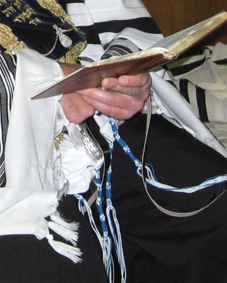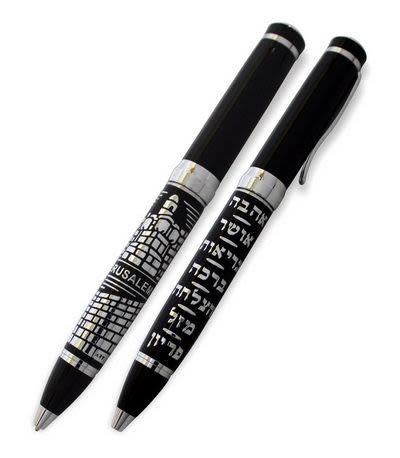
Fins, Scales, and Snails
Where does the biblical blue “techelet” dye come from? A fish? A snail? A mollusk? Rabbi Mordechai Kornfeld takes us on a thrilling journey to find out…

Biblical Blue, Part 2
What color is the Techelet dye? Here we have very clear, specific information. The Gemara in Bava Metzia 61b says that the color of Techelet is indistinguishable from that of indigo (“Kala Ilan” — see Sefer Ha’Aruch). When it comes to the Chilazon, though, the information we are given is much more sketchy.
From where does the Chilazon — the source of the Techelet dye — come? In Yechezkel 27:7 we read that the most professional production sites of Techelet were to be found in “the islands of Elishah,” which have been identified as either Italy (see Targum, ibid.) or Cyprus. The Talmud tells us in several places that the only place Techelet was to be found in Eretz Yisrael was in the territory of the tribe of Zevulun, which was along the Mediterranean coast from Haifa and northward to Tyre (Shabbat 26a, Megilla 6a).
Let us turn now to the identity of the Chilazon itself. What sort of creature is it? The only explicit source about this question is the following:
The body of the Chilazon resembles the sea (alternate reading: resembles the sky), and its body is similar to that of a fish. It comes up once every seventy (alt. reading: seven) years. (This may be an exaggeration employed to emphasize the scarcity of the species – MK.) The Techelet dye is obtained from its blood [=secretion], and it is therefore very expensive.(Menachot 44a; Beraita in Massechet Tzitzit)
Another hint to the nature of the Chilazon is given in Shabbat 74b, where we are told that the Chilazon was gathered from the sea in nets.
Tosafot (to Shabbat 73b “Mefarek,” 75a “Hatzad”), apparently basing his words on the above Gemara in Shabbat, intimates that the Chilazon is a type of fish, which squirms around in the net after it is caught. A similar view is expressed by Rabbenu Bachye in the beginning of Parashat Terumah (25:3), where the Torah mentions three dyes used in the construction of the Mishkan [=the movable Tabernacle of the desert] — Techelet, Argaman and Tola’at Shani. The last of these three dyes is generally understood to mean “scarlet from a worm.” Rabbenu Bachye asks how this is possible, since the Gemara (Shabbat 28b) says that only products which are kosher to be eaten were used in the Mishkan, and worms — or their secretions — are not kosher! He therefore explains that the scarlet dye in question was not actually taken from worms, but from some sort of berry that *contained* the worms. Following this approach, it may be concluded that the Chilazon, which is a sea creature, must be a regular fish, with fins and scales, for these are the only kosher sea creatures.
The approach of Rabbenu Bachye, however, is quite difficult. It seems clear from the Talmud Yerushalmi (Kilayim 9:1), and it is also a known fact, that the scarlet dye of Tola’at Shani was indeed extracted from a worm (the female Kermococcus vermilis, an insect that breeds on a certain species of oak) and not from a berry. Rabbeinu Bachye’s words are therefore very hard to accept (-a copyist’s error in the piece cannot be discounted). As far as how a non-kosher creature could be used in the manufacture of an item for use in the Mishkan, we must say that it is only the actual *materials* used in the Mishkan which were subject to this rule, not the dyes. The pigments, which are not tangible objects in the finished product, were not included in this prohibition. If this is so, we are not bound to assume that the Chilazon was any more a kosher creature than the Shani worm.
Squids & Snails
So if the Chilazon may not be a kosher fish, then what kind of fish was it?
In the late 19th century a Talmudic researcher by the name of Yehudah Levisohn wrote in his work “Talmudic Zoology” (p. 284-5) that the Chilazon was a type of squid known as the cuttlefish. Levisohn based his conclusion on an inference from a statement of the Rambam in Hilchot Tzitzit 2:2. Shortly afterwards, a brilliant Hassidic Rebbe, Rav Gershon Henoch Leiner of Radzin, came to the same conclusion. He carried the conclusion one step further, though, actually developing a process whereby the sepia [=inky secretion] of the cuttlefish, which normally produces a dark brown dye, was transformed into a blue dye! The dye turned out to be identical, chemically, to a common synthetic light-blue dye invented in 1704, known as Prussian blue. The Radziner Rebbe authored three large volumes to support his thesis, purporting to prove that he had re-discovered the long-lost Techelet, and set up a factory where the dye was produced. His followers adopted his opinion and began wearing the new Techelet string in their Tzitzit. With the exception of the Breslever Chassidim, however, the innovation was not accepted by the rest of the Jewish world, and his movement was even met with a substantial amount of opposition.
It is interesting to note that the method used by the Radziner Rebbe to produce Techelet consisted of boiling the sepia, iron filings and potash together at tremendously high temperatures to produce the pigment ferric ferrocyanide. Dye chemists are quick to point out, however, that this process doesn’t make any unique use of the squid’s inky secretion. In fact, the sepia itself disintegrates and never makes it to the final product, leaving behind only its nitrogen atoms. Any nitrogen-containing compound will produce the same result, if substituted for the squid ink! In fact, a similar process is used by any organic chemistry student as a test for nitrogen in compounds. (I thank the chemist Dr. Israel Ziderman of the Jerusalem Fiber Institute, founder of the Tekhelet Foundation, for giving me of his time to clarify this point. See also HaTechelet, pp. 413-6, for the results Rav Herzog obtained upon submitting the Radziner Rebbe’s Techelet to chemical analysis.)
Unfortunately, there are a number of technical difficulties with the Techelet produced according to the Radziner method. Firstly, Techelet was known to be absolutely indelible (Menachot 43b), while the Radziner Techelet can fade (a process called “bleeding”) when scrubbed with common detergents (see HaTechelet p. 179). Secondly, the blue color that he produced wasn’t the blue shade of indigo, but rather a more metallic blue (see HaTechelet p. 413). Also, the squid he used is of a species that is relatively common in the Mediterranean Sea, and this does not correspond to the statements made about the rarity of the Chilazon (HaTechelet p. 177). Furthermore, there are no more squids in the land of Zevulun than anywhere else in the Mediterranean. The only place they can be found in particular abundance is in the area of Italy (HaTechelet p. 178)!
Perhaps the strongest objection to the Radziner Techelet, though, is that the word “Chilazon” is used in numerous places in Chazal as a general term, meaning “snail.” In Shir HaShirim Rabba (4:11), a Chilazon is a creature that lives inside a shell (-see the Radziner Rebbe’s words on this matter in HaTechelet, p. 174. His explanation is not very satisfying). Also, in Bechorot (Mishna 6:2) and in Kelim (12:1) something with a spiral or twisted appearance is dubbed “Chilazon.” In Sanhedrin 91a we are told that Chilazons appear on the ground after a rain. It seems clear from all these sources that the word “Chilazon” is being used in the context of “snail,” and it is therefore logical to assume that the famous Chilazon which produces Techelet is a particular kind of snail. Rashi (Sanhedrin 91a) indeed tells us that the Chilazon creature is a type of slug, which definitely allows for the possibility of it being a mollusk. The Gemara in Menachot was actually careful to point out that the Chilazon is “*similar* to a fish,” i.e. a fish-like sea creature. It is not a fish itself.
The identification of the Chilazon as a type of snail enables us to solve another puzzle. Tosafot in Shabbat 75a (“HaTzad”) quotes a statement from Talmud Yerushalmi to the effect that catching a Chilazon on the Shabbat does not constitute a violation of the prohibition against trapping or catching animals on Shabbat. Tosafot is at a loss to explain why a Chilazon should be an exception to the rule. Now that we have identified the Chilazon as a type of snail, however, the answer is obvious. There is a rule that if an animal cannot easily escape (if it is blind or wounded, etc.) then “catching” that animal does not constitute a violation of the prohibition of “trapping” on Shabbat (Shabbat 106b). Certainly a snail cannot move away easily from its trapper! It is true that the Talmud Bavli asserts that the prohibition against trapping *is* violated by one who traps a Chilazon. This should not be taken as evidence that the Chilazon is not a snail. The Talmud Bavli may agree to the Yerushalmi’s identification of the Chilazon, but nevertheless prohibit its capture on other grounds. Perhaps picking out the barely discernible Chilazon on the sea bed cannot be compared to ensnaring a prominent helpless creature above the ground.
 Left, tztzis with techelet strings. Image ©Breslev Israel, 2009
Left, tztzis with techelet strings. Image ©Breslev Israel, 2009What of the fact that the Gemara says that Chilazons are harvested with a net? Doesn’t this seem to imply that they are a type of fish? The answer to this may lie in the fact that even today snails are captured by spreading baited nets (they are considered a delicacy in many countries). The bait lures the snails into the nets, which are then raised. Alternatively, the nets may have been used to confine the already harvested snails in a saltwater environment, until the dye could be made from them. (The Gemara tells us in Shabbat 75a that if the Chilazon is allowed to die before its juice is extracted, it cannot be made into a suitable dye.)
To be continued.
***
Rabbi Mordechai Kornfeld of Har Nof, Jerusalem is an acclaimed Torah scholar who initiated the Daf Yomi Advancement Forum.














Tell us what you think!
Thank you for your comment!
It will be published after approval by the Editor.